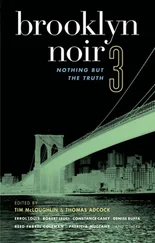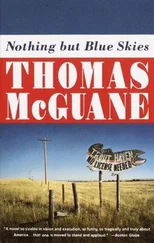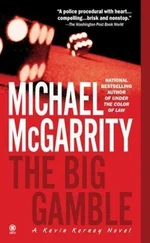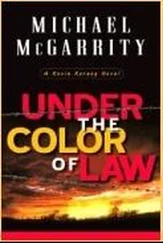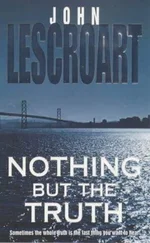Michael McGarrity - Nothing But Trouble
Здесь есть возможность читать онлайн «Michael McGarrity - Nothing But Trouble» весь текст электронной книги совершенно бесплатно (целиком полную версию без сокращений). В некоторых случаях можно слушать аудио, скачать через торрент в формате fb2 и присутствует краткое содержание. Жанр: Триллер, на английском языке. Описание произведения, (предисловие) а так же отзывы посетителей доступны на портале библиотеки ЛибКат.
- Название:Nothing But Trouble
- Автор:
- Жанр:
- Год:неизвестен
- ISBN:нет данных
- Рейтинг книги:4 / 5. Голосов: 1
-
Избранное:Добавить в избранное
- Отзывы:
-
Ваша оценка:
- 80
- 1
- 2
- 3
- 4
- 5
Nothing But Trouble: краткое содержание, описание и аннотация
Предлагаем к чтению аннотацию, описание, краткое содержание или предисловие (зависит от того, что написал сам автор книги «Nothing But Trouble»). Если вы не нашли необходимую информацию о книге — напишите в комментариях, мы постараемся отыскать её.
Nothing But Trouble — читать онлайн бесплатно полную книгу (весь текст) целиком
Ниже представлен текст книги, разбитый по страницам. Система сохранения места последней прочитанной страницы, позволяет с удобством читать онлайн бесплатно книгу «Nothing But Trouble», без необходимости каждый раз заново искать на чём Вы остановились. Поставьте закладку, и сможете в любой момент перейти на страницу, на которой закончили чтение.
Интервал:
Закладка:
“Would you mind if I took a look around on my own?” Kerney asked.
“Not at all,” Joe said. He paused to watch as the men cut a section of the wire fencing and began attaching it with brads to the post-and-beam corral. “Make yourself at home. Just remember to close the pasture gates behind you.”
After Joe and Bessie left, the day hands took a break, hunkering down to smoke cigarettes and drink some water. The welcome coolness of the cloudy morning had given way to a blistering sun, which felt uncomfortable in the humid air left behind by the rain squall.
Kerney talked with the men for a time, and once they learned that he ranched on a small place up in Santa Fe County and had known the Jordan family all his life, they loosened up noticeably. Mike and Pruitt, the two cowboys who’d stopped on the highway after the border agent’s body had been dumped, wanted to talk about the incident. Kerney obliged but kept his narrative of the event short.
He learned that the two men bunked together in a rented house in the town of Animas, and worked as stock haulers and heavy equipment operators when they weren’t hired out on the area ranches.
He asked Mike, a muscular six-footer in his thirties, about the problem of illegal immigrants crossing the border.
“The government would have to post an army down here to stop them,” he said. “We see the crap they leave behind everywhere. Back-packs, clothing, water bottles-you name it.”
Pruitt, who had the upper body of a weight lifter and carried a few extra pounds around his waist, nodded in agreement. “Hell, if you had the time, you could track them cross country all the way to Deming.”
“I didn’t see much evidence of that when I was out here yesterday,” Kerney said.
“They make a beeline for the smelter smokestack,” Mike explained. “They call the warning beacon on it the Star of the North.”
“I heard about that,” Kerney said. “But you’d think with Antelope Wells close by, it would draw more people crossing the border through this ranch.”
Mike shrugged. “I don’t know why the coyotes don’t use it that much. But if they did, Walt Shaw would run them off in a hurry. He doesn’t let anybody on the ranch he doesn’t know personally.”
The men went back to work and Kerney left, heading south toward the barn where he’d seen Shaw and his unknown associate unload the van.
On the one hand Shaw’s protectiveness about the ranch made sense; trespassers were never welcome on private land. On the other hand Shaw’s desire to keep strangers off the ranch might serve the alternative purpose of keeping certain activities hidden.
At the barn Kerney took another look again for an entry point. But daylight made no difference and he found none. He studied the tire tracks left behind by the van and followed them south along the ranch road. Soon the valley widened and he came to a fenced pasture that held over three hundred well-fed Angus heifers and calves, along with a few bulls that had been separated from the herd into a smaller paddock. The herd was clustered around a water trough and a nearby solar panel on a metal stanchion that supplied electricity to a well pump.
Kerney passed through the gate, closed it behind him, and crossed the pasture. Drawn by the sound of his truck the cows raised their heads, got to their feet, lifted their ears, and followed behind in a slow trot until it became clear no feed would be set out.
Through another gate Kerney continued south. In the distance he could see the faint outline of a fence that ran east and west across the wide valley, which he took to be the ranch boundary. He stopped and consulted the maps he’d bought in Santa Fe as part of the research he’d done on the Bootheel. He located his position on a Bureau of Land Management map of New Mexico that showed all federal, state, local, tribal, and privately owned land in the state and saw that he’d crossed over into the Playas Valley.
He looked up from the map through the rear window and saw the faint beacon of the Star of the North twinkle on and off. He switched to another map that showed the immediate area in greater detail. Clearly marked on it, no more than three miles away, was a landing strip.
Previously, Kerney had paid the map symbol no mind. It was not uncommon for larger spreads in remote locations to have landing strips. Big ranchers frequently used small fixed-wing airplanes to check on livestock, inspect fence lines, access range conditions, or occasionally ferry in needed equipment and supplies.
He put the maps away and scanned the land in front of him. There was no evidence of human habitation on the valley floor or in the hills and mountains that bracketed the basin. There were no telephone poles, electric lines, or microwave towers that would require maintenance or repair, and there was no sign of a landing strip on the north side of the fence that cut across the valley.
Kerney put the truck in gear and followed the tire tracks in the ruts of the dirt path until he reached the fence, where the tracks swung toward Chinaman Hills, a low-lying, bleak rise that bumped out of the valley. Before he reached the hills, the tracks veered south again, passed through a gate, turned east, and took him directly to the landing strip.
Kerney got out of the truck and looked around. On the bladed, packed dirt surface he could see fresh tire impressions from the nose and main landing gear of a light aircraft. Multiple sets of footprints led him to the spot where the vehicle had been parked, suggesting several trips had been made back and forth to load cargo. Although he wasn’t certain, Kerney didn’t think the landing strip was on the Jordan ranch. He walked around the strip in a wide circle and found a rutted dirt road that showed no signs of recent traffic and cut east across the valley toward a windmill. He went back to the truck and drove along it until he came to a locked gate that barred his passage. He climbed over it and read the posted sign attached to the other side of the railing. The landing strip was on the Sentinel Butte Ranch.
Kerney had seen enough. He checked his watch. If he hurried along, he could still make the drive to Virden, snoop around for a bit, arrive in Santa Fe by midnight, catch a few hours’ sleep, and get to work on time.
Back at the new horse corral Kerney spotted Shaw talking to the day hands and stopped for a little friendly conversation. Shaw greeted him cordially and asked if he’d enjoyed his tour of the ranch.
“I’ve never seen desert grassland look so good,” Kerney replied.
“It’s been a lot of hard work to bring the rangeland back to where it should be,” Shaw said with smile, “and it never would have happened without the coalition.”
Kerney asked about the coalition, and Shaw explained that the area ranchers had agreed to make grassland available to each other in exchange for creating land-use easements that prohibited subdivision.
“We get scant rain down here,” he added, “and the monsoons that do come are fickle, putting moisture on one ranch and bypassing another. Grass banking allows us to move cattle to neighboring ranches where there’s ample forage. How much of the ranch did you get to see?”
Kerney laughed. “Not a hell of a lot, given the size of the spread. I stopped near some westerly hills.”
Shaw nodded. “Those are the Chinaman Hills on the Sentinel Butte Ranch. Joe tells me you’re the police chief up in Santa Fe.”
“Not for long,” Kerney said with a grin. “I’m about to retire. This trip is sort of a dry run to see what it feels like to be a civilian again. I think I’m going to enjoy it.”
“You’ll be coming back down when they start filming the movie?” Shaw asked.
“With my family,” Kerney replied. “We’re going to make a vacation out of it.”
Читать дальшеИнтервал:
Закладка:
Похожие книги на «Nothing But Trouble»
Представляем Вашему вниманию похожие книги на «Nothing But Trouble» списком для выбора. Мы отобрали схожую по названию и смыслу литературу в надежде предоставить читателям больше вариантов отыскать новые, интересные, ещё непрочитанные произведения.
Обсуждение, отзывы о книге «Nothing But Trouble» и просто собственные мнения читателей. Оставьте ваши комментарии, напишите, что Вы думаете о произведении, его смысле или главных героях. Укажите что конкретно понравилось, а что нет, и почему Вы так считаете.

